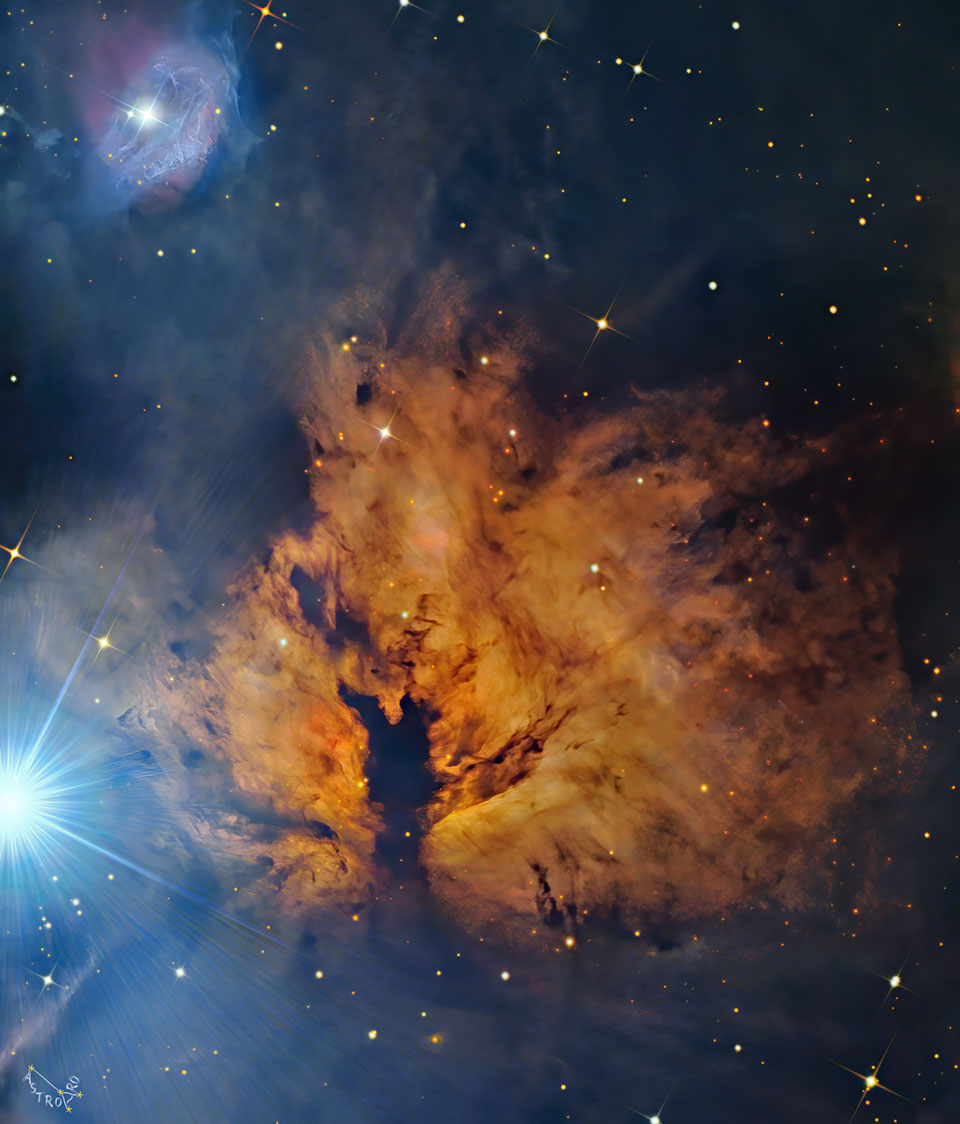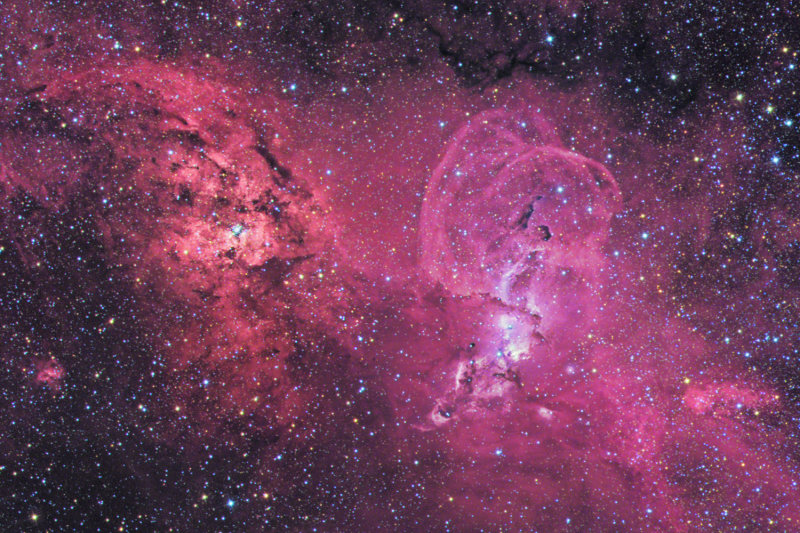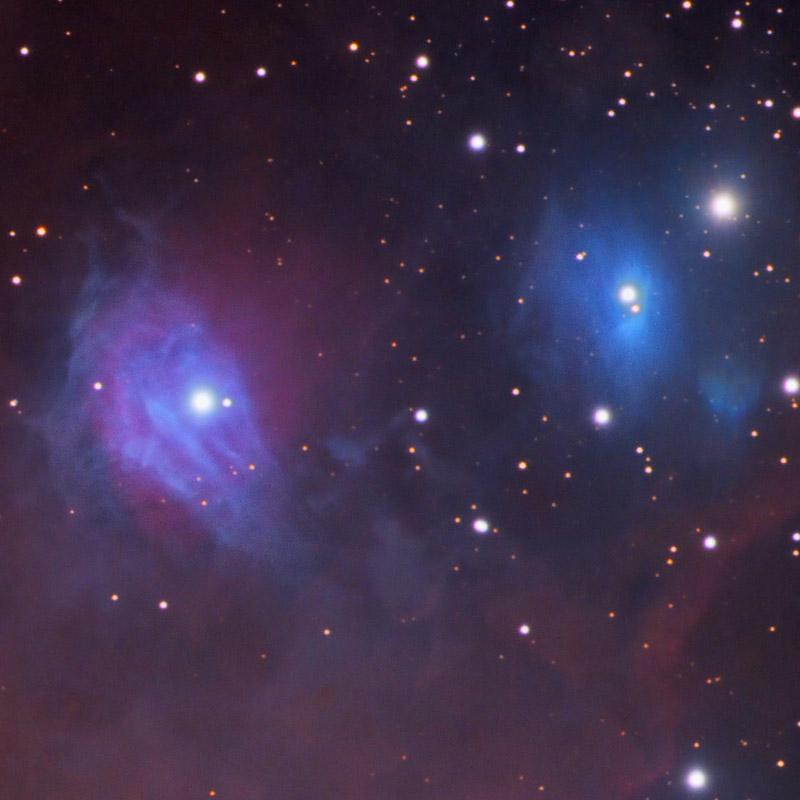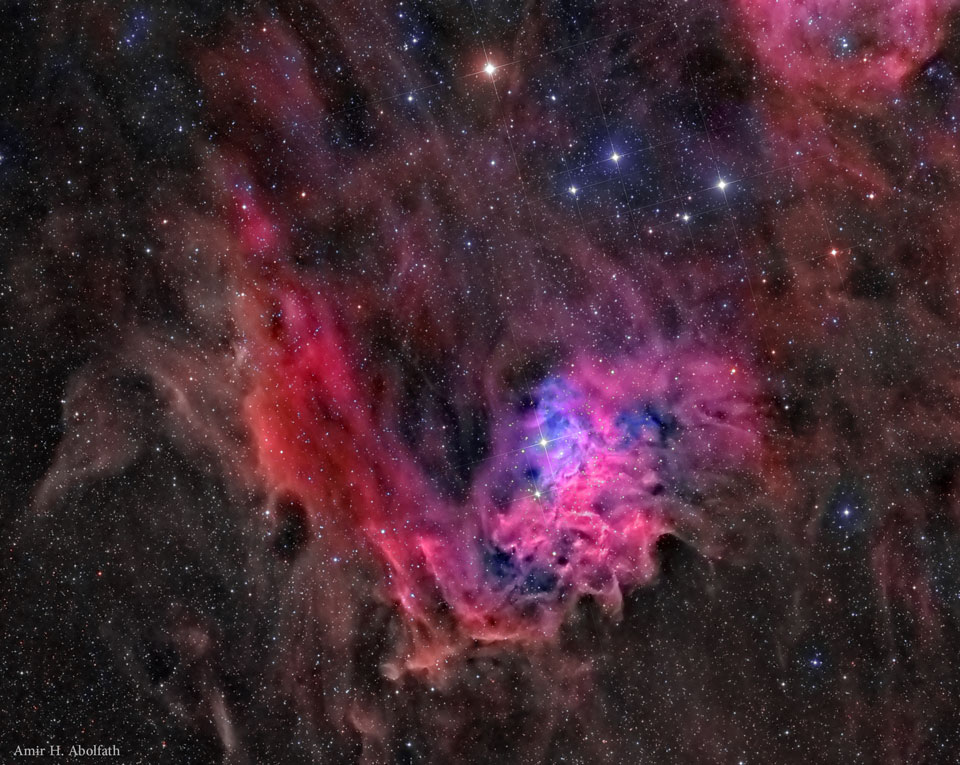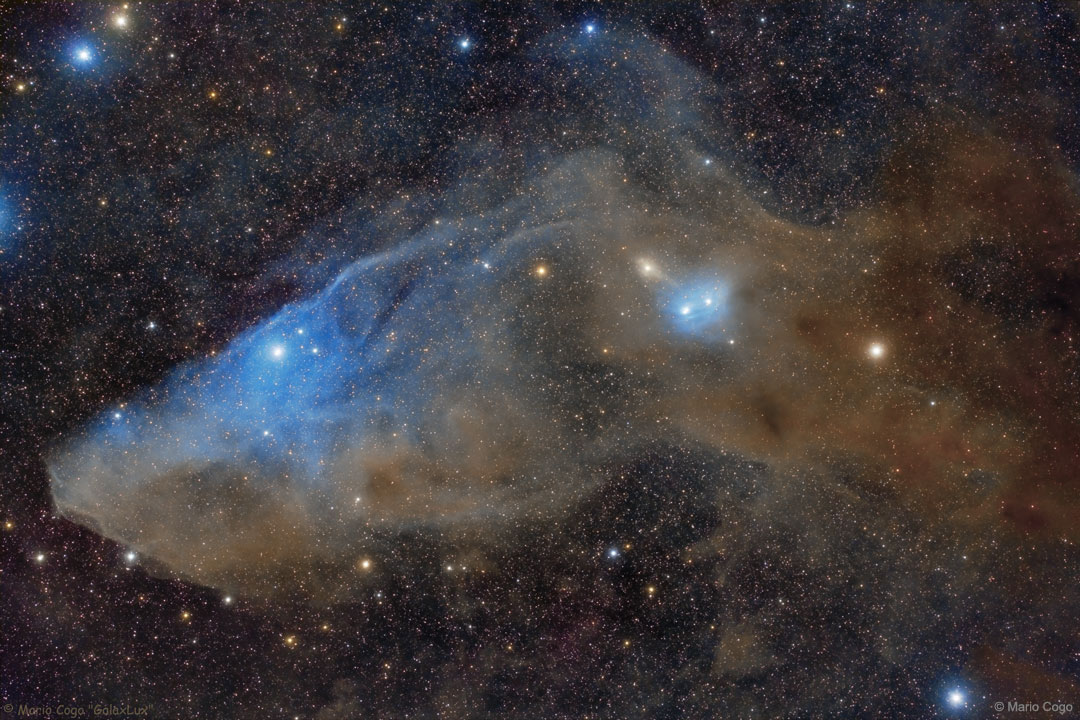VictorBorun wrote: ↑Mon Apr 12, 2021 7:11 pm
so Alnitak has a large parallax and therefore is close to us and the Flame Nebula has a zero or small parallax and can never be backlighted from Alnitak.
Now the Flame Nebula can not be backlighted from the stars within at a small angle; we get to see all angles from 0 to 90°.
And how can it be yellow then? It must have:
this color like an ink of a specific chemistry then
or
be backlighted anyhow by some obscured bright stars a few ly behind the Flame Nebula to keep all the scattering angles small
Or can a nebula shine yellow like a flame by dust particles in a hot media of >2700°C ? Not so bright as a bonfire, but paler, with fewer dust particles? If there is a UV stellar source to warm the media?
No, Alnitak has a small parallax. We just don't know how small it is, because Hipparcos, which measured its parallax, is not reliable when it comes to small parallaxes.
Give Hipparcos a nearby object with a large parallax, like red giant star Pollux, one of the bright stars of Gemini. Hipparcos measured its parallax to be 96.54 plus/minus 0.27 milliarcseconds. Note how small the margin of error is, compared with the parallax itself. That's why the distance estimate is so reliable. The Hipparcos parallax of Pollux puts Pollux at a distance of 33.785 plus/minus 0.094 light-years. That's reliable.
But when Hipparcos said that the parallax of Alnitak is 4.43 plus/minus 0.64 mas, and the distance to Alnitak therefore is 740 plus/minus 110 light-years, then that is far less reliable than it sounds. If you ask me, that Hipparcos Parallax is so unreliable that Alnitak could easily be either 500 or 1,000 light-years away. Probably not. But with Pollux, we can know that it's about 33 or 34 light-years away.
As for the Flame Nebula, I'm not sure that Gaia, reliable Gaia, can measure the parallax of its embedded infant stars at all, because they are probably only seen at infrared wavelengths. And I don't think it's at all possible for Gaia to measure the distances to extended sources like nebulas.
And I know that Gaia can't measure the parallax of Alnitak, because Alnitak is too bright for Gaia.
Can the Flame Nebula be "backlighted" by Alnitak? Yes, I guess that is possible. I don't know how we can find out, though.
Would a nebula shine yellow if it is at a temperature of >2700°C? Well, a
star that shone at around 2700°C (or better yet, K) would look a deep dark red. Actually, though, it would more probable look a rather deep orange, and that in itself would look quite red compared with the pale unsaturated colors of other stars.
Emission nebulas, though, shine by emitting specific, narrow wavelenghts, and I don't think the temperature of the gas- and dust cloud itself typically determines the specific wavelengths being emitted.
But I could be wrong. Ask the math people!
Ann
 Alnitak and the Flame Nebula
Alnitak and the Flame Nebula